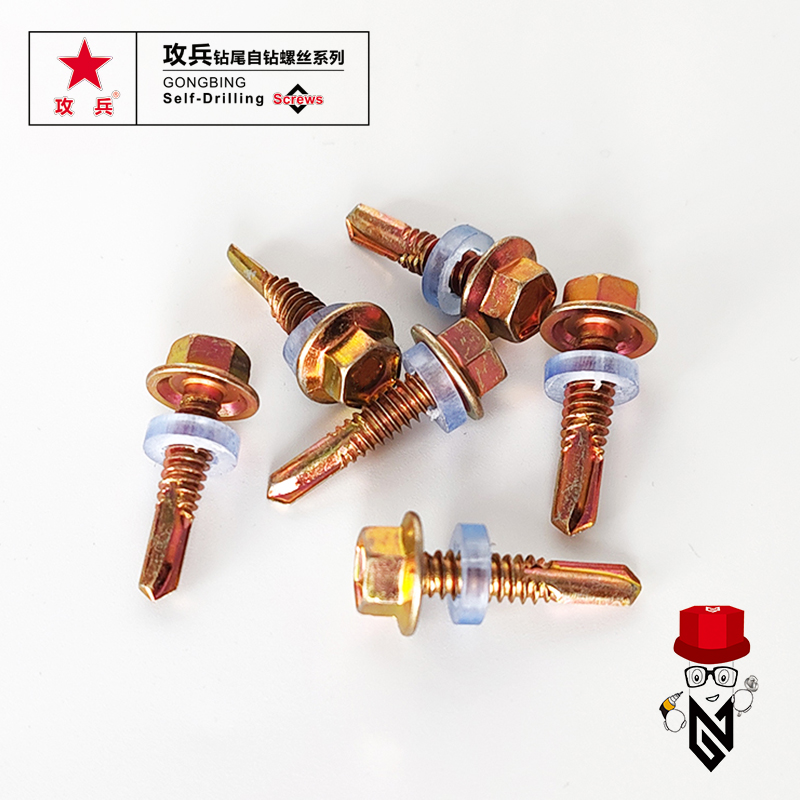Study of Steel Shear Studs and Their Applications in Structural Engineering
The Importance of Steel Shear Studs in Construction
Steel shear studs are crucial components in modern construction, particularly in the field of composite steel and concrete structures. These small, cylindrical pieces of steel are typically welded to the top flange of steel beams before concrete is poured. Their primary function is to provide a mechanical connection between the steel and concrete, facilitating the effective transfer of loads and enhancing the overall structural integrity of buildings and bridges.
One of the main advantages of using steel shear studs is their ability to create composite action between the concrete and steel. When used together, steel and concrete can leverage each other's strengths—steel provides tensile strength while concrete offers compressive strength. This synergy results in a composite section that performs better than if each material were used separately. The shear studs ensure that the loads applied to the structure are efficiently distributed, minimizing the risk of structural failure.
Shear studs come in various sizes and specifications, depending on the requirements of the project. They are designed to resist shear forces and prevent the slipping of concrete off the steel substrate. The design and arrangement of these studs can significantly influence the performance of a composite beam. Properly spaced shear studs enhance the stress distribution, while inadequate or poorly placed studs can lead to reduced shear capacity and potential structural issues.
Installation of steel shear studs is a crucial step in the construction process. Typically, the studs are welded to the steel beams before the concrete is poured. This welding process must comply with stringent quality controls to ensure that each stud achieves proper penetration and bonding with the steel. Inadequate welding can compromise the performance of the shear studs, leading to insufficient load transfer and potential failure of the composite system.
steel shear studs

In addition to their mechanical benefits, steel shear studs also contribute to the overall sustainability of building projects
. By optimizing the structural design, they allow for the use of less material while maintaining safety and durability. This efficiency can lead to reduced costs and a lower environmental impact, as less raw material means fewer resources consumed and less waste generated.Another important aspect of steel shear studs is their role in seismic design. In earthquake-prone areas, buildings must be designed to withstand dynamic forces. The composite action facilitated by shear studs enhances the ductility and resilience of structures, allowing them to absorb and dissipate energy during seismic events. This characteristic is critical for ensuring the safety of occupants and the longevity of the buildings.
Furthermore, adherence to industry standards and codes is essential when using steel shear studs. Various organizations, such as the American Institute of Steel Construction (AISC) and the American Concrete Institute (ACI), provide guidelines to ensure that the design and implementation of shear studs are carried out correctly. Engineers and architects must remain informed about these standards to ensure compliance and maintain the integrity of their projects.
In conclusion, steel shear studs are a vital element of modern construction techniques. Their ability to create effective composite action between steel and concrete not only increases structural capacity but also enhances overall safety and resilience. Through proper installation, adherence to industry standards, and a focus on sustainability, steel shear studs play an essential role in shaping the future of construction. As advancements in materials and technologies emerge, the functionality and efficiency of shear studs will undoubtedly continue to evolve, facilitating even more innovative designs in the architectural landscape.
-
Weatherproof Plastic Expansion Anchors for OutdoorNewsJun.06,2025
-
Sustainability in the Supply Chain: Eco-Friendly TEK Screws ProductionNewsJun.06,2025
-
Load-Bearing Capacity of External Insulation FixingsNewsJun.06,2025
-
Double Head Bolts: Enhancing Efficiency in Industrial MachineryNewsJun.06,2025
-
Corrosion Resistance in Chipboard Screws: Coatings for Wholesale DurabilityNewsJun.06,2025
-
Butterfly Toggle Bolts : Enhancing Structural ResilienceNewsJun.06,2025
